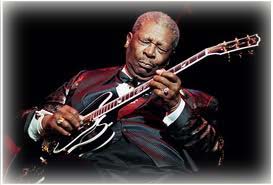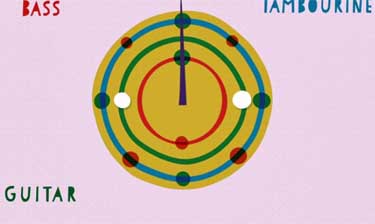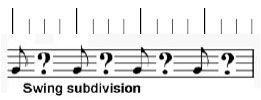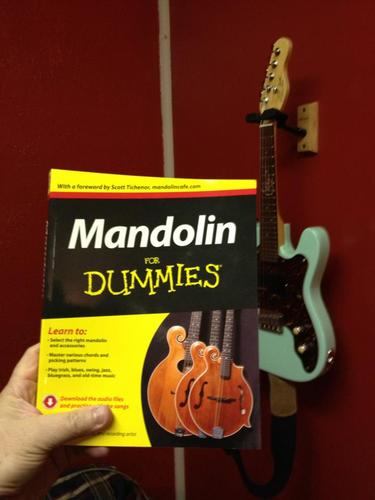« September 2014 |
Main
| November 2014 »
 October 30, 2014 | Best of JM: Dirty It Up
October 30, 2014 | Best of JM: Dirty It Up
Enjoy the popular archive material below.
From November 4, 2010 | Dirty It Up

If we are serious about performing well, we work a lot on the fundamentals of playing. Just as in sports, it's the fundamentals that allow us to perform the athletics and express our music more effectively, yet in the pursuit of effective execution, we can't forget that great technique is a means to an end, and not the end. It's often the bane of classical training, the musician who can play notes brilliantly, but not play the "music."
Listen to some classical musicians attempt jazz. They can sound stiff and unconvincing, despite playing all the notes cleanly and correctly. There's still something missing, and we suggest it's because of an unbending focus on execution rather than aesthetic. Not to condone sloppy playing, but once in a while a player needs to work from a solid skill base, and "dirty it up." Four elements to consider:
Rhythmic control. We learn to play in time. We have to do that, especially when playing in an ensemble setting. A good metronomic sense is crucial to cooperate with others in a group, and you need a good sense of rhythm to keep it consistent. The problem is in jazz (and bluegrass), you're missing the "swing." Notes aren't evenly divided into duples and triplets, there's a subconscious and grey area of timing that yields an aesthetic tension and energy, when subdivisions aren't clean. Things sound too "white."
Articulation. Good pick control is an inarguably important skill. Playing with a clear pick stroke is crucial to pushing tone and a strong fretting finger is the only way you can maximize sustain. That said, we still have tricks at our disposal, slides, hammer-ons, pull-offs, mutes, and harmonics. It's these more subtle ingredients that give our music character and individual identity. Pick and fret cleanly, but don't think every note has to be started by a pick. Don't be afraid to glissando into a note, or prior to its release.
Dynamics. Variations in volume are routinely overlooked by the best of players. We have to have more than two dynamics, loud and off. Playing quietly makes the louds louder. Fortissimo is great for statement and drama, but the ear tires quickly, and we need the contrast. Subtle changes in picking including grip, angle, and pick contact can also lend character to a passage. Silence can be a terrific weapon.
Phrase consistency. Thinking where our musical sentences start and stop is important, but we need to go the next step and build within these "story arcs" the sense of action. We start soft, build, climax, and get soft again. Introduction, tension, resolution. Tell a tale, communicate an aesthetic narrative within the string of notes, or that's all you have. A string of notes.
We don't want to undermine the importance of good technique. You really can't embrace the subtleties we mentioned without a strong physical command of your instrument. Scales and arpeggios are crucial to developing these abilities, and unintended sloppiness is not pleasant to listen to. Once you have achieved some of the fundamentals, embrace the next step.
Dirty it up.
Further:
It don't mean a thing, if it ain't...
Tremolo. Stirred, not shaken.
Keeping it honest: metronomes
Pick propulsion
Respect the Silence
Posted by Ted at 3:58 PM
 October 23, 2014 | Freeing us from the tyranny of the bar line
October 23, 2014 | Freeing us from the tyranny of the bar line

An intriguing TED video from Queensland musician John Varney illustrates a unique way of visualizing rhythm outside the context of traditional notation. We all know how print music often fails to communicate the nuance of swing and blues. He uses an object we are all familiar with--the wheel.

His graphic crosses all kinds of genre lines in the presentation. This is another great way for you to conceptualize and communicate the often undefinable that exists in the aural.
Video Link: A different way to visualize rhythm - John Varney
Further:
Don't mean a thing. If it ain't...
On the "Up and Up": Jazz Articulations
It's a drag...
Circle of 5ths. Like a clock, especially when it is a clock.

Posted by Ted at 8:43 AM
 October 16, 2014 | Zak Borden: Build Your Own Chords! Part 1
October 16, 2014 | Zak Borden: Build Your Own Chords! Part 1

Last week, we took a step back to review the building blocks of the triad on the mandolin fretboard through the artistry of Don Julin. We're going to review similar material from Brazillionares mandolinist Zak Borden. He has a similar knack for explaining some of the music theory complexities in terminology we can all understand. The following is the first of a three part series. You'll want to dig deeper, for sure!
Video Link: Zak Borden: Build Your Own Chords! Part 1
YouTube channel: Zak Borden
Posted by Ted at 6:57 PM
 October 9, 2014 | 3 string major triads with Don Julin
October 9, 2014 | 3 string major triads with Don Julin
Music theory is most easily understood stripped down to its simplest elements. Recording artist and best-selling author Don Julin gives concise demonstration of the triad chord spelled up and down the fretboard spelled in its purest form, the 3-note chord.
Though we like to confine the 3-note spellings to the three thickest strings, Don covers it beautifully back and forth, moving across the strings, and gives a credible reason to do so, thinking the voicings from the top (3rd on top, 5th on top, root on top).
It's easy and brilliant at the same time.
Enjoy!
Video Link: 3 string major chords
If you don't already have Don's books in your library, we strongly recommend you do!
Purchase information: Mandolin for Dummies

Further:
An Interview with Don Julin
Creating energy with Diatonic triads.
Fitting in with triads
More Three-note chords to supercharge your comping
Posted by Ted at 4:11 PM
 October 2, 2014 | Improvisation is conversation
October 2, 2014 | Improvisation is conversation

We always enjoy articles on the science of music and how it affects the physical realm. A February 2012 Atlantic article "How Brains See Music as Language" addresses the nature of the impact of jazz, particularly improvisation, and the similar response of language--conversation with words.
From the the report, "What researchers found: The brains of jazz musicians who are engaged with other musicians in spontaneous improvisation show robust activation in the same brain areas traditionally associated with spoken language and syntax. In other words, improvisational jazz conversations 'take root in the brain as a language,' Limb said.
'It makes perfect sense,' said Ken Schaphorst, chair of the Jazz Studies Department at the New England Conservatory in Boston. 'I improvise with words all the tim--like I am right now--and jazz improvisation is really identical in terms of the way it feels. Though it's difficult to get to the point where you're comfortable enough with music as a language where you can speak freely.'"
The best aesthetic experience is when players lock in to each other in dialogue.
Read article: How Brains See Music as Language
Further:
Charles Limb: Building the musical muscle/
The Jazz Brain; Improv
Numbers.
Fingers, Ears, Brain
Artist phrasing
Posted by Ted at 3:18 PM

Disclaimer: In the 'Information Age' of the 21st Century,
any fool with a computer, a modem, and an idea can
become a self-professed 'expert." This site does not
come equipped with 'discernment.'
|



